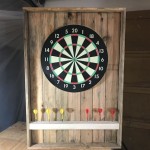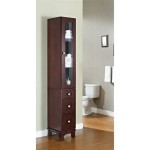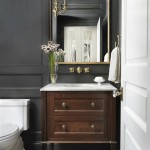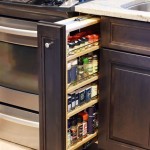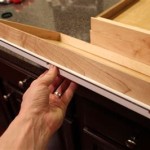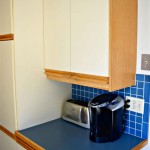How to Measure for Kitchen Cabinet Knobs and Pulls
Installing new cabinet hardware can give your kitchen a fresh and updated look. But before you can choose the perfect knobs and pulls, you need to know how to measure for them correctly. Proper measurement ensures that your hardware complements your cabinets and functions smoothly. This guide provides a comprehensive approach to measuring for kitchen cabinet knobs and pulls, ensuring you achieve the desired aesthetic and functionality.
Understanding the Basics
Before diving into the specifics of measuring, it's crucial to understand the different types of cabinet hardware and their standard dimensions. There are two primary categories: knobs and pulls. Knobs are typically circular or spherical, whereas pulls are elongated handles. The size and shape of the hardware will influence the measurement process.
In general, the following measurements are considered when selecting knobs and pulls:
- Overall Length: This measurement applies to pulls and refers to the total distance from one end to the other.
- Center-to-Center (CTC): This measurement is also for pulls and indicates the distance between the two mounting holes. It's crucial for aligning pulls with cabinet doors.
- Projection: This measurement refers to the distance the knob or pull extends from the cabinet door or drawer. It's essential for ensuring the hardware doesn't interfere with drawers or other fixtures.
- Diameter: This measurement applies to knobs and refers to the distance across the knob, from one edge to the other, passing through the center.
- Height: This measurement applies to knobs and refers to the distance from the top to the bottom of the knob.
Step-by-Step Measurement Guide
Now that you understand the different measurements involved, let's take a look at a step-by-step guide to ensure you gather the necessary information:
- Gather Tools: You'll need a measuring tape, pencil, and a notepad. It's also helpful to have a ruler for more precise measurements.
- Choose Your Hardware: Before you start measuring, choose the style and type of hardware you prefer. This will help you determine the appropriate measurements for your cabinets.
- Identify the Mounting Locations: Determine where you want to place the knobs and pulls on each cabinet door and drawer. Avoid placing hardware too close to hinges, as it can hinder opening and closing.
- Measure for Pulls:
- Overall Length: Measure the desired length of the pull. Consider the size of the cabinet door and the space available.
- Center-to-Center: Measure the distance between the two holes that will be used to mount the pull. Ensure the distance accommodates your chosen pull size.
- Projection: Measure the distance the pull will extend from the cabinet door. Keep in mind that excessive projection can interfere with adjacent cabinets.
- Measure for Knobs:
- Diameter: Measure the diameter of the knob. This will tell you the distance across the knob.
- Height: Measure the height of the knob. This will help you ensure the knob is the appropriate size for the cabinet door.
- Projection: Measure the distance the knob will project from the cabinet door. Be sure to account for any handles or other hardware on the cabinetry.
- Record Measurements: Once you've measured each cabinet door and drawer, carefully record the measurements for each piece of hardware. Label the measurements with the corresponding cabinet or drawer location to ensure you don't get confused.
- Review and Verify: Double-check all your measurements to ensure accuracy. It's best to err on the side of caution and take multiple measurements to avoid any mistakes.
Additional Tips
Here are a few additional tips to make the measurement process even smoother:
- Consider Cabinet Thickness: If you are replacing existing hardware, ensure the new hardware has the same projection as the old hardware. If you're installing hardware for the first time, consider the thickness of your cabinet doors and drawers. This will help you determine the appropriate projection for your chosen hardware.
- Functionality: Think about how you will use the cabinets. For example, if you frequently use a particular cabinet, you may want to choose hardware that is easy to grasp and open.
- Style: Choose hardware that complements the style of your kitchen. If you have modern cabinets, sleek and minimalist handles may be the best choice. For traditional kitchens, consider ornate knobs or pulls.
- Spacing: Ensure there is sufficient spacing between the cabinet hardware and any other features, such as hinges or drawer slides. This will prevent interference and ensure smooth operation.
- Professional Assistance: If you're unsure about any aspect of the measurement process, don't hesitate to consult a professional. They can help you ensure you choose the right hardware and install it correctly.
Measuring for kitchen cabinet knobs and pulls correctly is essential for achieving a polished and functional kitchen. By following these steps and tips, you can ensure your hardware choices complement your cabinetry and enhance the overall aesthetic of your kitchen.

The Ultimate Guide For Cabinet Hardware Placement And Sizing Kitchen Remodel Inspiration Design

How To Mix Kitchen Cabinet Hardware Knobs And Pulls Porch Daydreamer

The Ultimate Guide For Cabinet Hardware Placement And Sizing Kitchen Inspiration Design

The Right Length Cabinet Pulls For Doors And Drawers Kitchen Hardware

How To Choose And Install New Cabinet Knobs Or Pulls 9 Steps

How To Choose The Right Length Pull For Cabinets Kitchen Hardware Cabinet Renovation

How To Measure Cabinet Pulls For Your Kitchen Like A Pro Maxave

The Ultimate Guide For Cabinet Hardware Placement And Sizing Kitchen Pulls

Learn How To Place Kitchen Cabinet Knobs And Pulls Cliqstudios

How To Install Cabinet Handles Knobs And Pulls Christopher Scott Cabinetry
Related Posts



